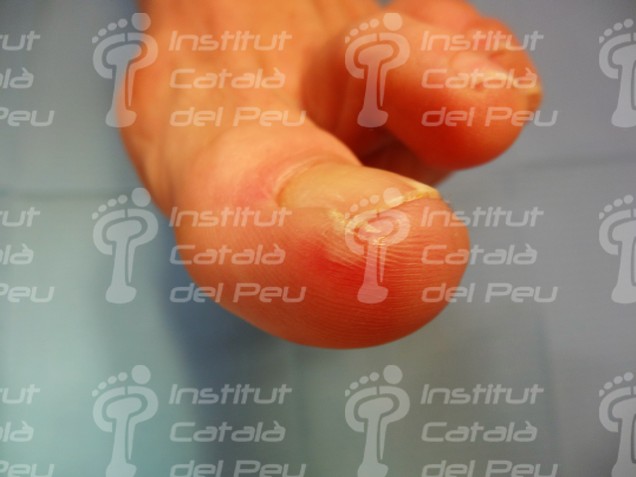The erythema pernio, or commonly known as chilblain, is a delimited tumefaction which appear in acral or distal zones of hands and feet, although it can also be located in other parts of the body, like for example in the nose or the auricular zones. They emerge as a result of the exposure to cold and humid climates where the extended vasoconstriction causes inflammation and hypoxemia of vascular walls.
The main features of chilblains are the appearance of papulae or macule lesions either erythemaviolaceous nodules with also edema and causing ampulla or ulcerated lesions. They may appear in one way, multiple way, symmetric way or bilateral way. It mainly affects young people, particularly women and people with circulatory insufficiency. The chilblains usually appear during the next 24 hours of cold weather exposure.
The chilblains may have an idiopathic or secondary origin to systemic diseases, like for example, the erythematosus lupus, hepatitis, rheumatoid arthritis, Raynaud’s phenomenon, hematologic neoplasia, etc.
An erythema pernio is made because of the appearance of a permanent vasoconstriction of the arterioles of deep dermis with dilation of the smallest superficial blood vessels against a usual reaction to cold weather, where the vasoconstriction of deep arteries is accompanied by a vasodilatation of the later, in order to keep perfusion.
The symptomatology starts with a burning and tingling sensation, and afterwards, it appears itch or considerable pruritus. It is advisable not to rub the affected zone because it can irritate more, increasing the symptoms of the chilblain.
The diagnosis is mainly clinical, being benign its prognosis. The chilblains are transitory and self-limited although they may cause some pain and pruritus during two weeks as maximum.
There is a basic prevention which consists of physical measures, like wearing suitable clothes, especially those people prone to have chilblains. This kind of clothes must keep the body temperature and must not be tight. As a matter of fact, the heating and the use of insulating materials have drop the amount of chilblains. There is also a connection with sedentary people.
When chilblains appear, it is recommended to clean and dry properly the skin, as well as to heat it without using neither a too much direct focus nor a very sharp way.
The treatment chosen is nifedipine in order to reduce the duration, pain and pruritus of chilblains.
Other alternative treatments to reduce chilblains are vasodilators for external use only, as well as preparations with nitroglycerine, heparin or corticoids in cream format, although its effectiveness is not guaranteed at all. In serious cases it can be taken orally vasodilators, together with acetylsalicylic acid as a platelet anti-attaché.
Erythema pernio or chilblain in the back of the first toe.
You can watch the appearance of chilblains in the second and fourth toe.
You can watch the appearance of chilblains in the fleshy part of the third, fourth and fifth toe.
Chilblains on an advanced stage in fourth and fifth toe.
Chilblains in the second and third toe.
Chilblain in the plantar side of first toe.
Chilblains may affect in the same way hands and feet. You can watch chilblains in the second, fourth and fifth finger of hand.
